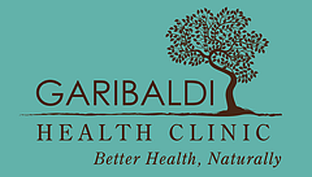Eczema
Somewhere back in our childhood, most of us can remember some kid who was forever fussing and scratching at his or her eczema, driving everyone around them half-crazy. It might even have been you.
Even with modern medications, the condition is as common as ever (7-10% of the population), and it occurs as it always has, more often and more severely in children.
Known as “the itch that rashes,” eczema is characterized by repeated cycles of itching and scratching, itching and scratching, causing dry, flaky and inflamed skin. Excessive scratching will promote swelling and even bleeding.
Allergies are almost always involved in eczema, hence its most common name, atopic (allergy) dermatitis. Genetics frequently plays a part as well, particularly in families that are prone to hay fever. There is a strong correlation between eczema and asthma.
A number of other types of eczema are recognized, though the difference between them is, in some cases, largely a matter of where and how the rash appears. Atopic dermatitis, for example, affects mainly places where there are creases in the skin, such as behind knees and elbows, on the wrists, neck, ankles or buttocks, while dyshiderosis, or housewife’s eczema occurs on palms and soles and between fingers and toes, especially in warm weather.
Xerotic eczema has a crackled appearance, like a dry riverbed, and afflicts mainly the elderly, particularly in arid winter conditions. Cradle cap, or seborrhoeic dermatitis, on the other hand, is a condition of infants, appearing as a yellow, crusty scalp rash that is thought to be associated with dandruff.
While it’s uncertain how closely related these skin conditions are to atopic eczema, one of the most common eczema-like rashes – contact dermatitis – is clearly different in origin. Its causes are external irritants, such as poison ivy or chemical and abrasive substances. This form of eczema – if we can call it that – is on the increase, especially among industrial and construction workers.
Since eczema is mainly an allergic condition, the first step towards a cure is to identify the allergen. The prime suspect, more often than not, is food. The most common sensitivities include eggs, cow’s milk, peanuts, wheat, soy, sugar, food additives, caffeine, chocolate, tomatoes and citrus.
Testing for food sensitivities can be done by a simple patch/ scratch test, a bloodtest, or by electrodermal testing. An elimination/challenge diet is another way, which works by avoiding certain foods and then watching for reactions when they are reintroduced.
And of course, the cause of eczema may not be food at all, but rather any of dust mites, or the chemical components of perfumes, cosmetics, detergents, soaps and shampoos. The same sensitivity testing will work for these.
As for treatment, it’s important to distinguish between relieving symptoms and getting at the root cause. Cortisone ointment, for example, may reduce or even eliminate itching and rash, but relief is often temporary, because the cause hasn’t been addressed. And take care: cortisone thins the skin and should be used sparingly.
For more lasting relief, look to omega 3 fatty acids. Best sources are salmon, mackerel, anchovies, herring, sardines and the seeds or oil of hemp or flax. Licorice root, taken either internally or topically, is a powerful antiallergenic, while vitamins A and E and the mineral zinc are helpful as well.
Finally, if you’ve got eczema, hydrate your system with 6-8 glasses of water a day. Or if your infant child has it, remember that breastfeeding is a highly effective preventative to both eczema and asthma.
©Dr. Ashely Gordon, 2008

